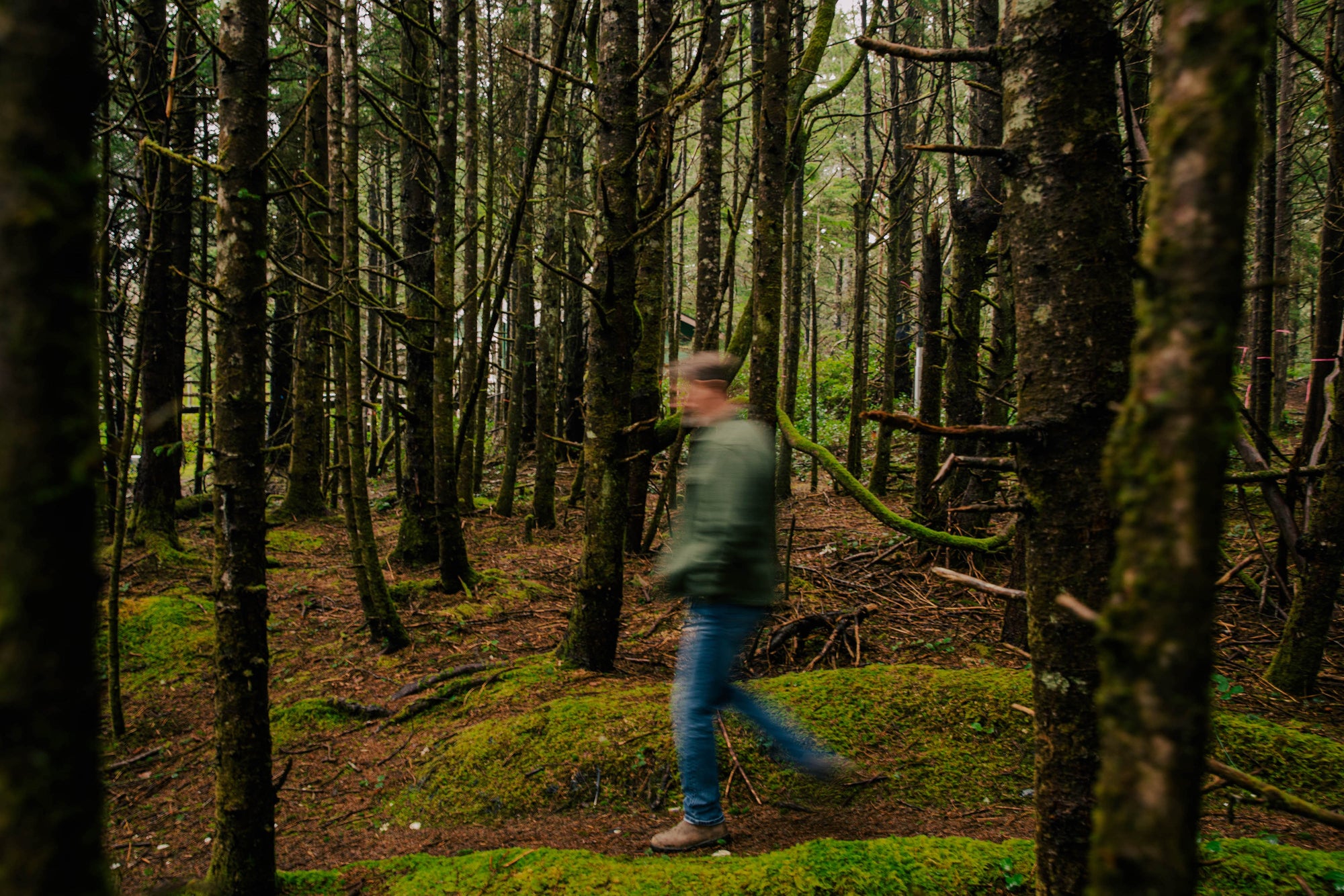
An absolute patience
Trees stand up to their knees in fog
- Denise Levertov
So much of our lived experience follows cycles: the seasons, fluctuations in emotional states, the milestones of life, the body as it changes. As technology continues to change these cycles, with the news and trends speeding up at unprecedented pace, we know the importance of looking to the patient movements of the organic world when designing our own. One place to look is trees and how we’ve used them.
More than any other natural thing, trees have always provided material and inspiration for building, for art, and for the way we see the world. Our silent and standing teachers, we model ourselves after trees in their diversity. As seen in sayings—the family tree, our roots, branches of knowledge—trees have provided us with poetic inspiration and ways of understanding patience, history, and the interrelatedness of ideas. Everything is connected and everything takes time, trees tell us.

Image of trees on Bowen Island
While we know that trees can and have been used to build, and we continue to find new ways of doing so responsibly, an age-old method called tree shaping—or arbortecture—is often overlooked. This term refers to techniques that slowly shape living trees over time to form infrastructure, art, and buildings.
Consider how trees in the boreal forests of the far north can take up to 120 years to grow, or how the giant trees of the Pacific Northwest can live for millennia. Of course, we can never get close to this in our short lifetimes, but there have been cultures that have used the slow-growing strength of trees to create meaningful structures for their communities.
For untold generations, cultures around the world have been using living trees to create structures that are both durable and sustainable by using what American scholar Eva Marie Garroutte, a member of the Cherokee nation, has called Lo-Tek. Canadian anthropologist Wade Davis describes these ancient innovations as “indigenous technologies” that can help manage humanity’s ecological footprint.

Image of living root bridge by Arshiya Urveeja Bose (source)
One such technology is the famed living root bridges of Meghalaya in India, which can also be found in places like Sumatra and Java. Picture rolling foothills covered with thick green forests, with ravines and valleys and waterfalls, and communities spread between them. Here, for thousands of years, people like the Khasi have been constructing suspension bridges to more easily cross rivers. This is achieved by taking the roots of trees growing along the ravines and slowly guiding them across the gap—weaving them as they go—eventually connecting the weaves to the roots of a tree on the other side, where the same method has been carried out. The process can take up to 15 years, but for those who wait, the bridges can last up to 500 years. Embedded into the very creation myths of the people, the living root bridges have ferried generations with minimal impact on the ecosystem.
Few others have managed to show such long-term dedication to trees. Of course, there are other examples of tree shaping, in places like Japan where bonsai trees are meticulously shaped or forests are managed by growing trees on top of each other through a process called daisugi. In Europe, trees have been used as walls to separate fields, and in more recent years artists have used trees to grow inhabitable works of art, like the tree cathedral of artist Giuliano Mauri in Bergamo, Italy.

Image of Giuliano Mauri's Tree Cathedral by Pava (source)
Beyond the world of art, architects and designers have been taking indigenous building technologies—like those highlighted by Garroutte and Davis—more seriously. One such project is the Fab Tree Hab, a hypothetical structure proposed by design studio Terreform ONE that proposes growing a modern home with trees over a plywood scaffold, which would then be removed and recycled.
In Stuttgart, designers Ferdinand Ludwig and Daniel Schönle have begun work on a project called Baubotanik Tower. This project involves hundreds of living willow trees, shaped by thin strips of steel scaffolding, which will eventually reach three stories and support people.
While these adaptations are in their infancy, we have older models that show the potential for the patient work of building with trees. They show that living things are some of the strongest and most dynamic building materials on earth, contributing to the replenishment of the environment, providing shade, and capturing carbon. These structures are available if we learn from them, if we have the patience.


